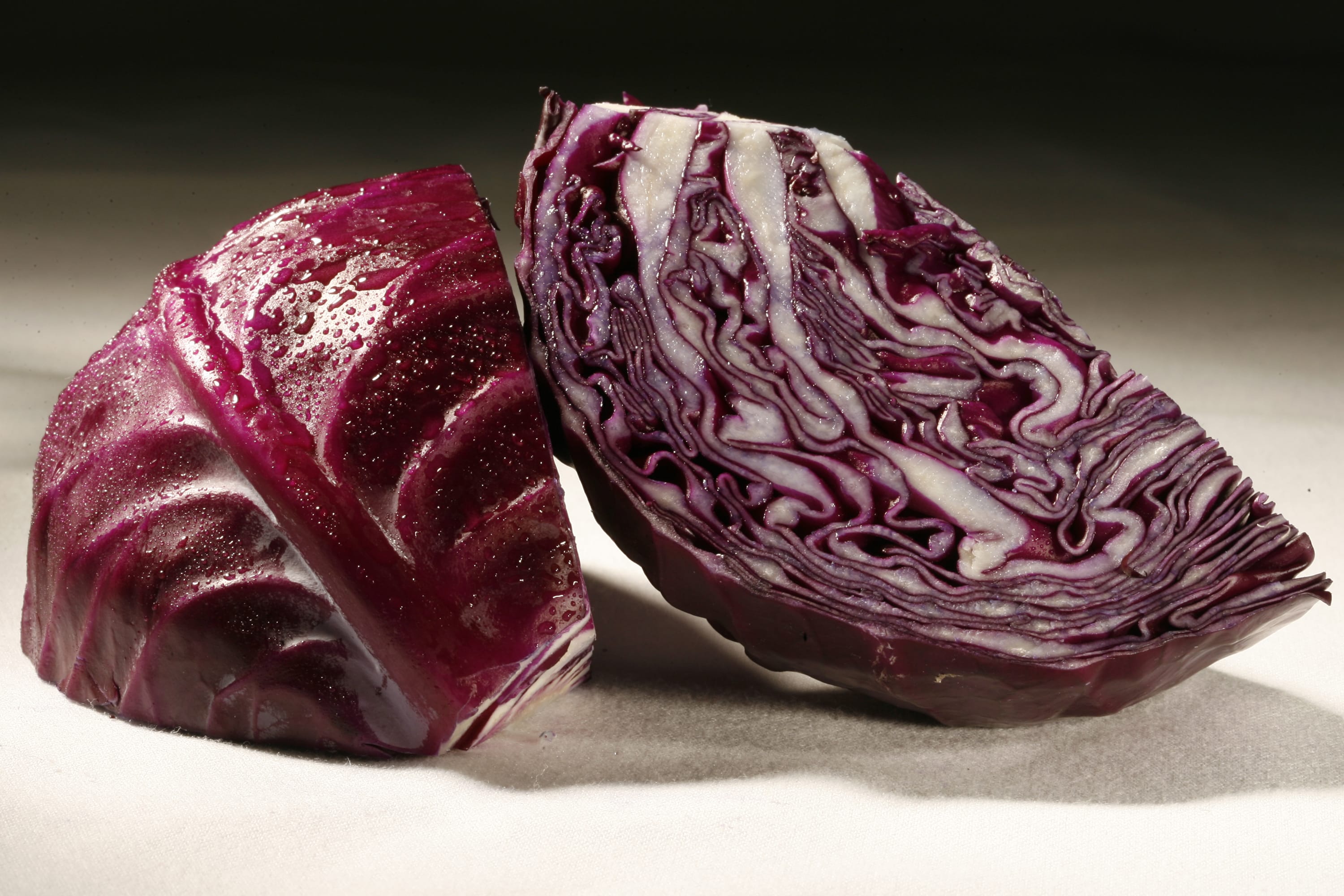Cabbage is related to broccoli, cauliflower, spring greens, kohlrabi and brussel sprouts.
Requiring only three months’ growing time, an acre of cabbage will produce more edible vegetables than any other plant.
There are three types of cabbage: red, green and Savoy. The most common form is the smooth-leafed, firm-headed green or red cabbage. These cabbage have a crunchy texture and defined taste. The crinkle-leafed savoy cabbage has a delicate taste and is used mainly for cooking. Chinese, bok choy and napa cabbage are related but are not true cabbages. In the U.S., most cabbage is used for coleslaw and sauerkraut — the most popular topping for hot dogs is sauerkraut.
As a food staple in many countries throughout Europe for centuries, cabbage was brought to the Americas in 1541. By the 18th century, it was cultivated by both colonists and Native Americans.
Choose cabbage heads that have good color (no yellow), are large, compact and heavy for their size, with no evidence of damage. Holes and damage to the outer leaves may indicate decay or worm damage inside the head of cabbage. An old head of cabbage will have outer leaves pulled away, and leaves will start separating from the stem.
Only winter cabbage can be kept in storage for up to four months by storing in an outdoor root cellar or storage area at 32 degrees with high humidity.
Store cabbage by putting the whole head in a plastic bag in the refrigerator for up to a week, two weeks if it’s fresh from garden. If you only need half a head, place the remaining half in plastic bag, add a few drops of water onto the cut side and refrigerate.
To freeze cabbage, cut into coarse shreds, blanch two minutes in boiling water, drain, chill and pack into freezer bags. To use cabbage, trim off stem end, discard outer leaves and wash head thoroughly.
Cabbage can be steamed, baked, braised, stewed, saut?ed, braised or stuffed, eaten raw, pickled and frozen. Add it to your soups or stews or roast wedges in the oven. When cooking with red or purple cabbage, add 1 teaspoon lemon juice or vinegar to the pot — or it will turn blue.
Cooked cabbage may be stored in the refrigerator for up to four days. Be careful not to overcook cabbage or it will become extremely pungent. An idea for a quick meal would be to saut? sliced green cabbage and onions in olive oil until golden, season with salt and pepper and serve over noodles or rice. Serve with sliced tomatoes.
When cooking cabbage or cooking with cabbage, some companion herbs/spices are celery, caraway or mustard seed, nutmeg, savory, tarragon, garlic, dill weed, thyme and black pepper. Companion vegetables include potatoes, leeks, onions, and carrots. Cabbage also goes well with corned beef and sausage.
Cabbage equivalents
• 1 small/medium head = 1 pound cabbage = 4 cups shredded cabbage = 2 cups cooked cabbage.
• 1/4 pound cooked cabbage = 1 serving
For more information and downloadable how to publications on preserving, pickling and dehydrating visit the WSU website at http://ext100.wsu.edu/clark/?p=1134
Vicki Ivy is a WSU Clark County Extension Master Food Preserver. For more information, contact the Master Food Preserver (MFP) Hotline at 360-697-6060 ext. 5366 or website at clark.wsu.edu.



